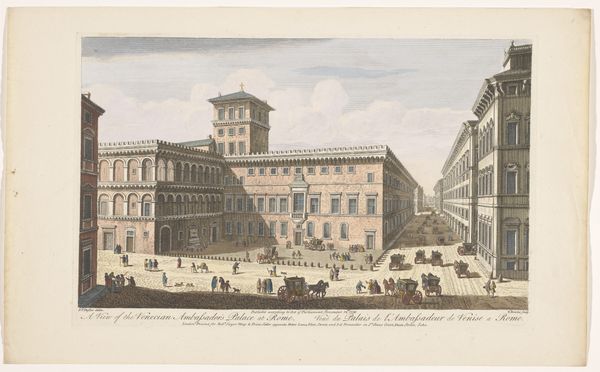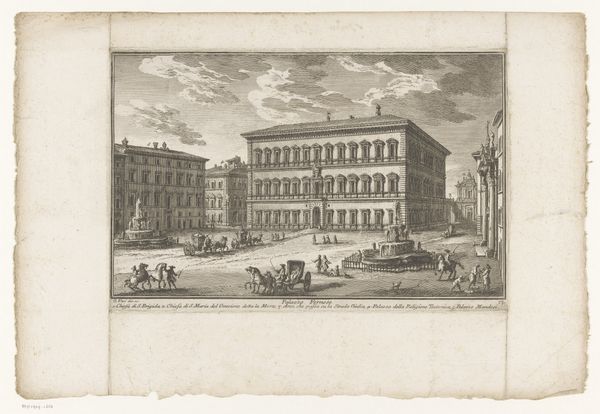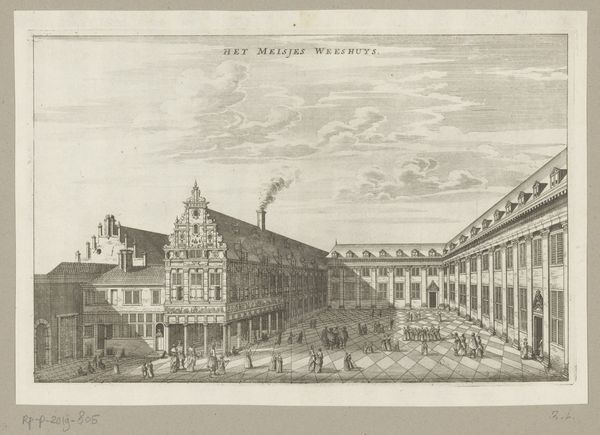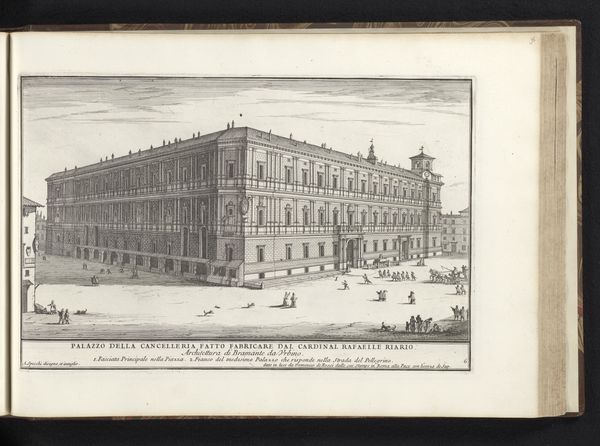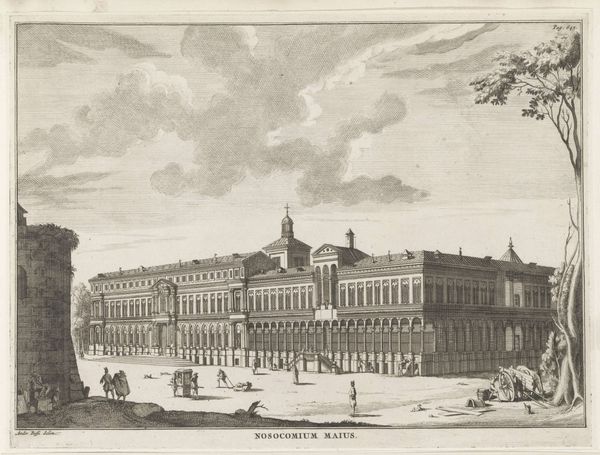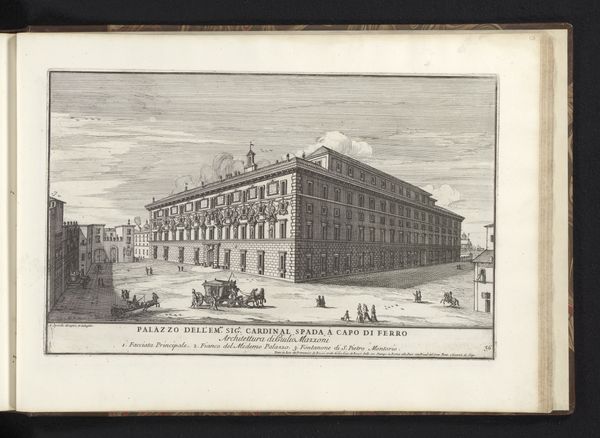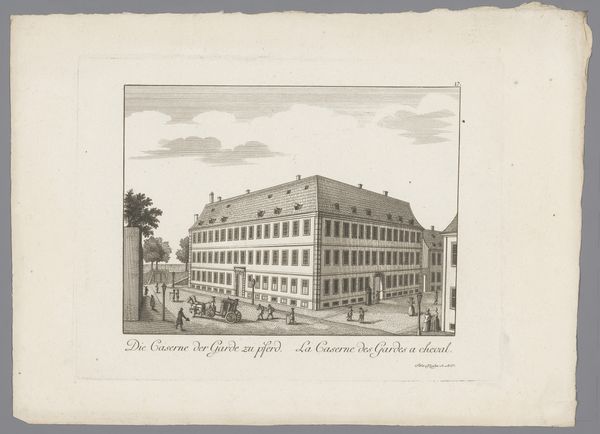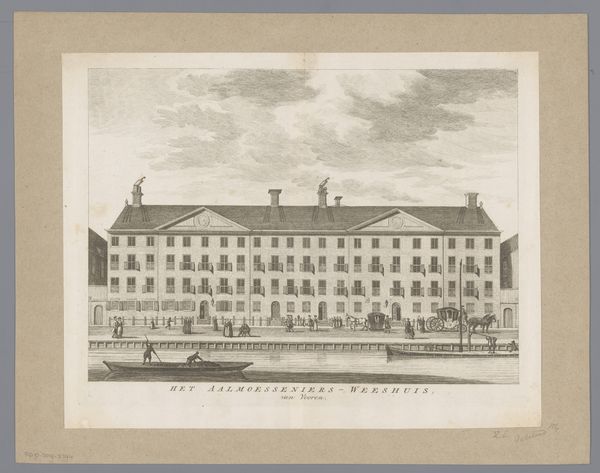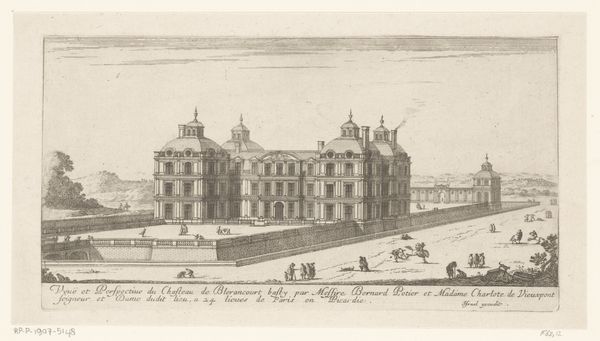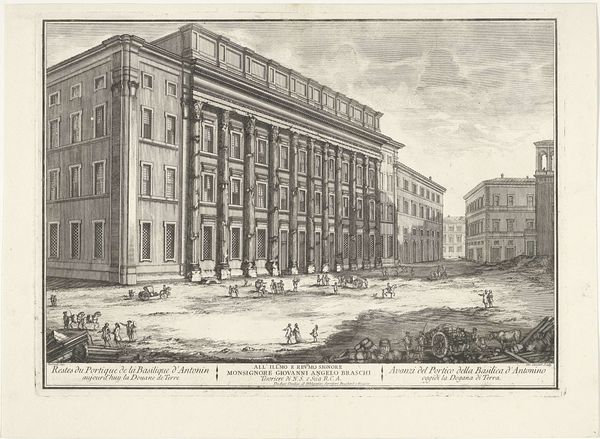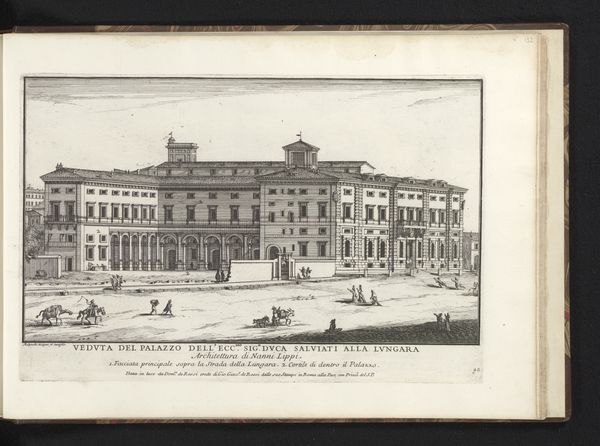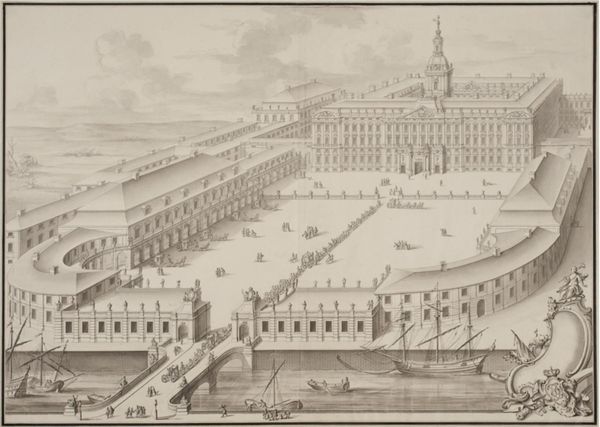
print, engraving, architecture
#
baroque
# print
#
cityscape
#
history-painting
#
engraving
#
architecture
Dimensions: 205 mm (height) x 313 mm (width) (plademaal)
Editor: This print, "Christiansborg Slot" by C.F. Seyfart, dates back to the 1740s. The precision of the engraving is striking. It really captures the imposing scale of the architecture, doesn't it? How do we contextualize this image, and how might it have been viewed at the time? Curator: Precisely. Consider this print not just as a depiction, but as a form of public address. Prints like these circulated widely, shaping perceptions of power and urban development. Think of it as controlled propaganda, an advertisement if you will, showcasing the grandeur of the state through architecture. What impact do you think an image like this would have had on viewers who likely never got near the place? Editor: I imagine it would reinforce a sense of awe and distance from those in power, perhaps a feeling of civic pride intertwined with deference. But isn’t it just a nice-looking building? What is so political about it? Curator: Everything about it is political! Baroque architecture, and therefore its representation, was deeply intertwined with expressions of authority. The very act of commissioning such a detailed print emphasizes the importance the royal court placed on their image and public perception. It's interesting to note who gets depicted, and what those depictions would mean, compared with what might not be shown. Does the presence of waterways play a part in constructing a modern royal image? Editor: So, it’s less about objective representation and more about constructing a specific narrative about power? The river might hint at control and easy access for trade and governance? Curator: Exactly! And think about where it would be displayed – perhaps in homes of wealthy merchants or government officials. It wasn't necessarily for the common person’s consumption, but a reinforcement of existing social hierarchies and power structures. The print, therefore, becomes a tool for solidifying dominance. Editor: I see. It’s fascinating to consider how an image, seemingly straightforward, is actively shaping and reinforcing power dynamics. Curator: Absolutely, thinking of these prints as part of broader cultural strategies allows us to unpack hidden power dynamics and understand the complex role art plays in public life.
Comments
No comments
Be the first to comment and join the conversation on the ultimate creative platform.
